Website design in 2025 is moving faster than ever. New trends, technologies, and user expectations are reshaping how we build and experience the web each day.
To stand out, it's not just about creativity. The tools you use matter just as much. The right website design applications unlock your team's potential, help you work smarter, and make sure your visitors enjoy every moment on your site.
Curious which tools will lead the way this year? We have handpicked nine essential website design applications that empower designers, agencies, and businesses to thrive. Ready to future-proof your digital presence? Let’s dive in.
Why the Right Website Design Applications Matter in 2025
As we look towards 2025, digital transformation is accelerating at a pace we've never seen before. Audiences expect seamless, visually stunning online experiences on every device, and businesses are under increasing pressure to deliver. The tools we choose shape how well we can meet these demands, and that is where website design applications truly come into play.
Modern website design applications are no longer just about creating attractive layouts. They empower us to stay ahead of the curve, adapting to trends like AI-driven design, enhanced accessibility, and mobile responsiveness. With the right technology, designers can quickly translate ideas into reality, ensuring websites not only look great but also perform flawlessly for every user.
A recent study revealed that 70% of businesses plan to increase their investment in digital design tools, highlighting the growing recognition of their impact on success. According to the Adobe Digital Trends 2024 Report, this trend is set to continue as organisations realise the value of advanced website design applications in driving innovation and efficiency.
Let's take a look at how the right applications can transform a team's workflow. For example, agencies using cloud-based collaborative platforms have cut project turnaround times dramatically, allowing them to respond faster to client needs. Similarly, businesses leveraging AI-powered website design applications can automate repetitive tasks, freeing up time for creativity and strategic thinking.
However, relying on outdated tools can create serious challenges. Security risks may increase, integration with new technologies becomes more difficult, and support for emerging web standards could be limited. These obstacles can hinder progress and even put your brand at a disadvantage.
Here's a quick comparison to illustrate the difference:
| Benefit of Modern Applications | Risk of Outdated Tools |
|---|---|
| Enhanced collaboration | Poor team communication |
| Faster project delivery | Slow turnaround times |
| Support for latest standards | Incompatibility issues |
| Stronger security features | Increased vulnerability |
| Scalability and flexibility | Limited growth potential |
As your business evolves, scalability and flexibility become essential. Website design applications that can grow with your needs help future-proof your online presence, making it easier to adapt to new markets, technologies, and user expectations.
Whether you're part of a large agency, a freelance designer, or an in-house team, investing in the right website design applications is no longer optional. It's the foundation for creativity, collaboration, and long-term digital success. By making informed choices now, we can ensure our websites continue to delight users and outperform the competition in 2025 and beyond.
9 Essential Website Design Applications for 2025 Success
Choosing the right website design applications can make or break your digital projects in 2025. With so many options, it is vital to know which tools offer the best blend of creativity, efficiency, and collaboration. Let us explore nine must-have website design applications that are shaping the future of web creation.
Figma
Figma stands at the forefront of website design applications in 2025, loved for its real-time collaboration and cloud-based workflow. Pricing starts with a generous free plan, Professional at £12 per editor per month, and Organisation at £45 per editor per month.
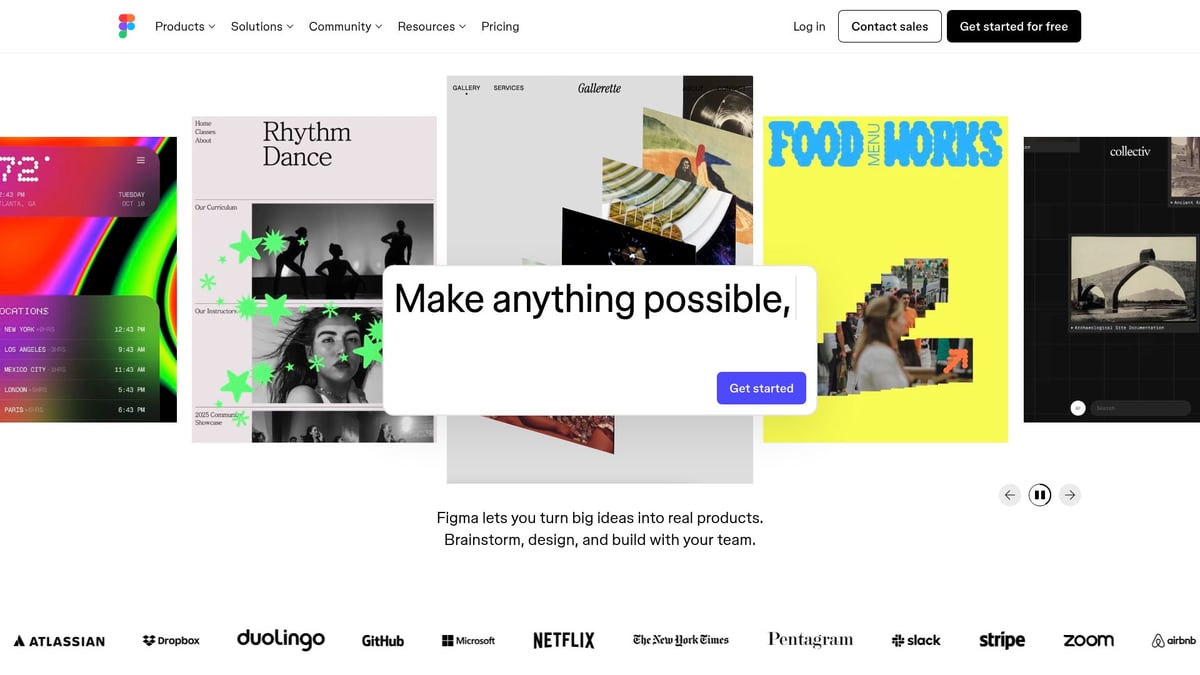
Core features include prototyping, design systems, and live team editing. Figma empowers remote teams to work together, no matter where they are. Its intuitive interface and browser-based access make it ideal for agencies, distributed teams, and UI/UX designers.
Key benefits:
Enables seamless remote teamwork
Streamlines design feedback
Integrates with tools like Slack and Jira
Pros:
User-friendly interface
Massive plugin ecosystem
Access from any device with a browser
Cons:
Occasional lag with large files
Limited offline capabilities
Figma’s collaborative features set it apart from other website design applications, making it a top pick for modern teams.
Webflow
Webflow has become a favourite among website design applications, especially for those who want creative control without heavy coding. Its plans include a free starter, site plans from $14 per month, and workspace plans from $19 per month.

Webflow’s visual designer lets you build, animate, and launch responsive websites. It offers a built-in CMS, eCommerce, and hosting—all in one platform. Designers, startups, and marketers appreciate the no-code approach and rapid prototyping.
Key benefits:
Visual web design without code
Built-in SEO tools
Fast site launch
Pros:
Full control over design and animation
Integrated CMS and eCommerce
All-in-one platform
Cons:
Steeper learning curve for beginners
Higher cost for advanced features
Webflow helps users stay ahead with website design applications that keep up with evolving web standards and trends.
Adobe XD
Adobe XD remains a staple in the website design applications toolkit for creative professionals. Pricing starts with a free starter plan, Single App at £9.98 per month, and All Apps at £51.98 per month.

This tool excels at UI and UX design, robust prototyping, and integrates seamlessly with Adobe Creative Cloud favourites like Photoshop and Illustrator. Agencies and enterprise teams benefit from familiar workflows and powerful vector tools.
Key benefits:
Seamless integration with other Adobe apps
Advanced prototyping features
Scalable for large teams
Pros:
Recognisable Adobe interface
Powerful design tools
Reliable performance
Cons:
Fewer plugins than Figma
Collaboration tools less advanced
For those already in the Adobe ecosystem, XD is a dependable choice among website design applications.
Sketch
Sketch is a Mac-native contender in the world of website design applications, prized for its speed and robust design system tools. Pricing is straightforward: Standard at £9 per editor per month, with custom business pricing.
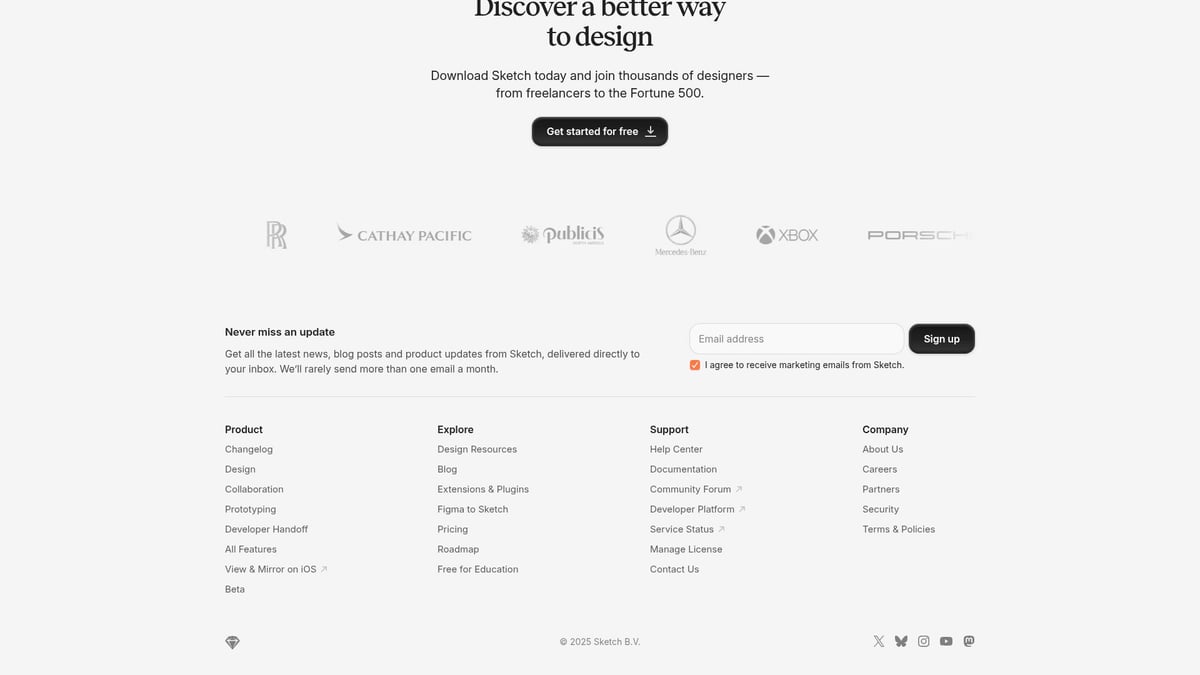
Sketch offers vector editing, reusable symbols, and extensive plugin support. Freelancers and boutique agencies love its lightweight feel and rapid workflow.
Key benefits:
Mac-optimised performance
Design libraries for consistent branding
Strong community plugins
Pros:
Fast and responsive
Excellent for design systems
Clean, simple interface
Cons:
Mac-only, limiting cross-platform teams
Web-based collaboration is less robust
Sketch stands out among website design applications for those who prefer a native Mac experience and streamlined workflow.
Canva
Canva is the go-to solution for quick, accessible website design applications, especially for non-designers. Plans include a free version, Pro at £10.99 per month, and Teams at £12.99 per user per month.
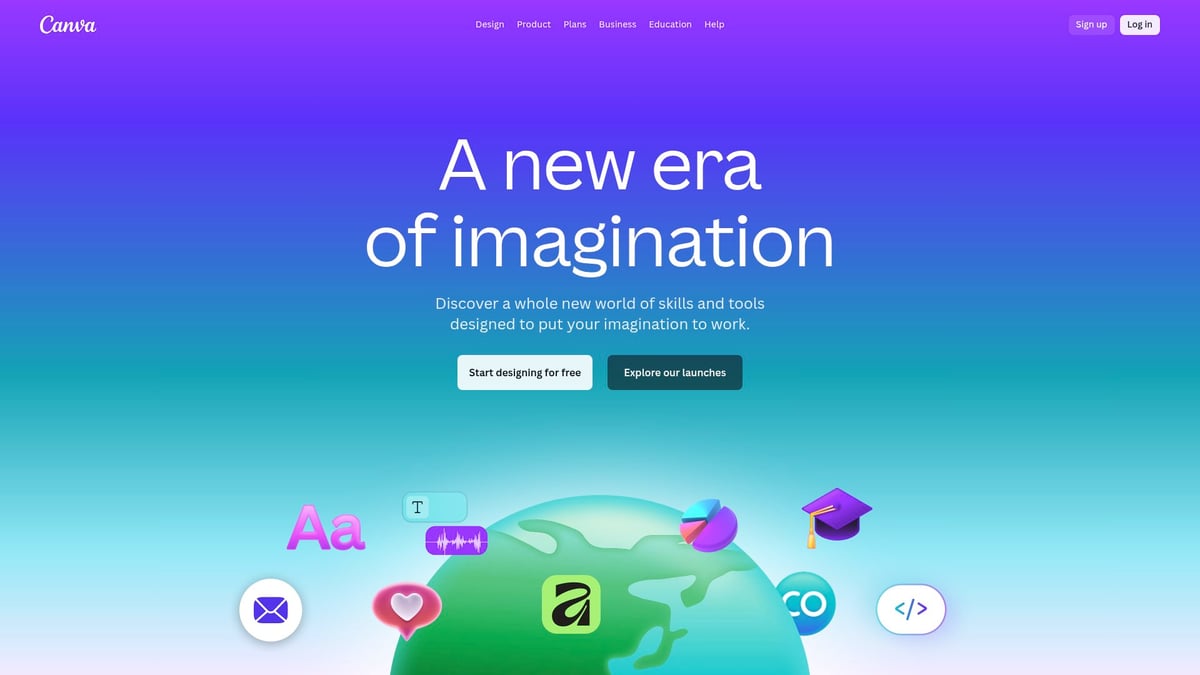
With drag-and-drop design, thousands of templates, and a vast stock asset library, Canva is perfect for small businesses and marketers who need beautiful visuals fast.
Key benefits:
Intuitive, user-friendly interface
Huge template and asset library
Collaborative tools for teams
Pros:
Affordable pricing
Accessible to all skill levels
Quick content creation
Cons:
Limited advanced web design features
Not ideal for complex sites
For basic websites and marketing materials, Canva is a leader among website design applications, making design accessible to everyone.
Framer
Framer has risen fast in the landscape of website design applications, offering interactive prototyping and real-time collaboration. Pricing starts with a free plan, Pro at $20 per editor per month, and custom Enterprise options.
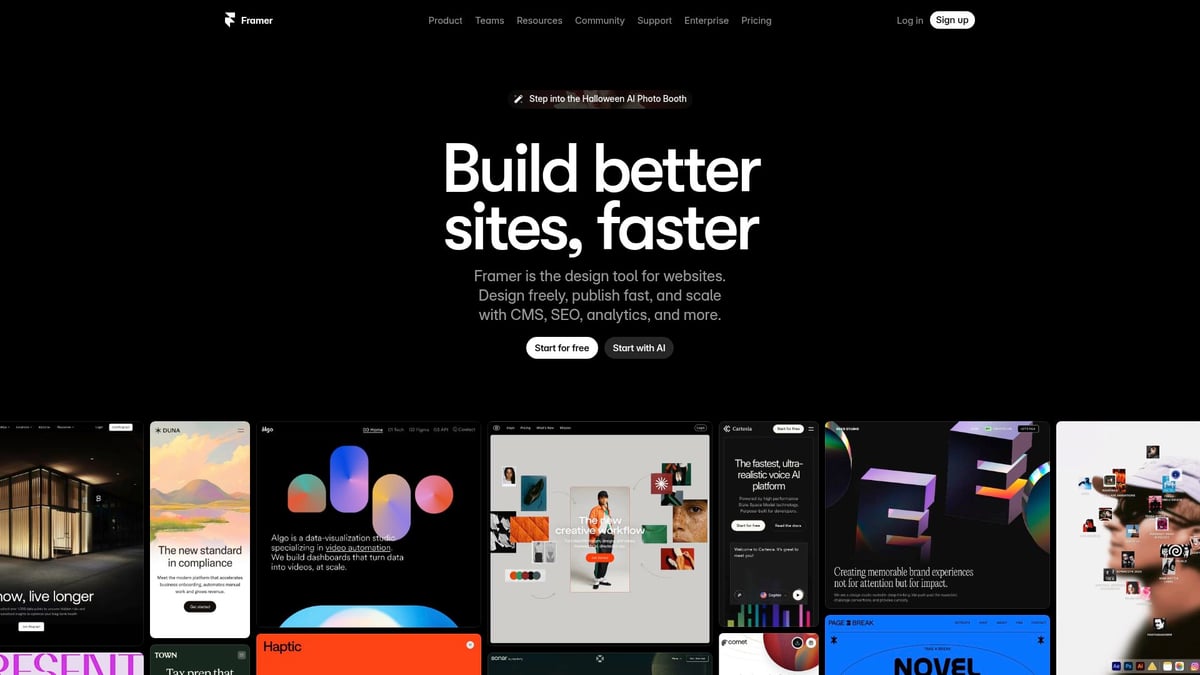
Framer’s standout feature is its advanced animation capabilities and the ability to export production-ready React code. It is perfect for product teams and designers working on interactive projects.
Key benefits:
High-fidelity prototyping
Real-time team collaboration
Seamless developer handoff
Pros:
Powerful animation tools
React component support
Flexible prototyping
Cons:
Steep learning curve for non-coders
Higher cost for teams
Framer is an excellent addition to your website design applications stack if you value interactivity and developer-friendly handoff.
WordPress
WordPress continues to dominate as one of the most flexible website design applications. It is free for self-hosted use, with paid plans on WordPress.com starting at £4 per month.
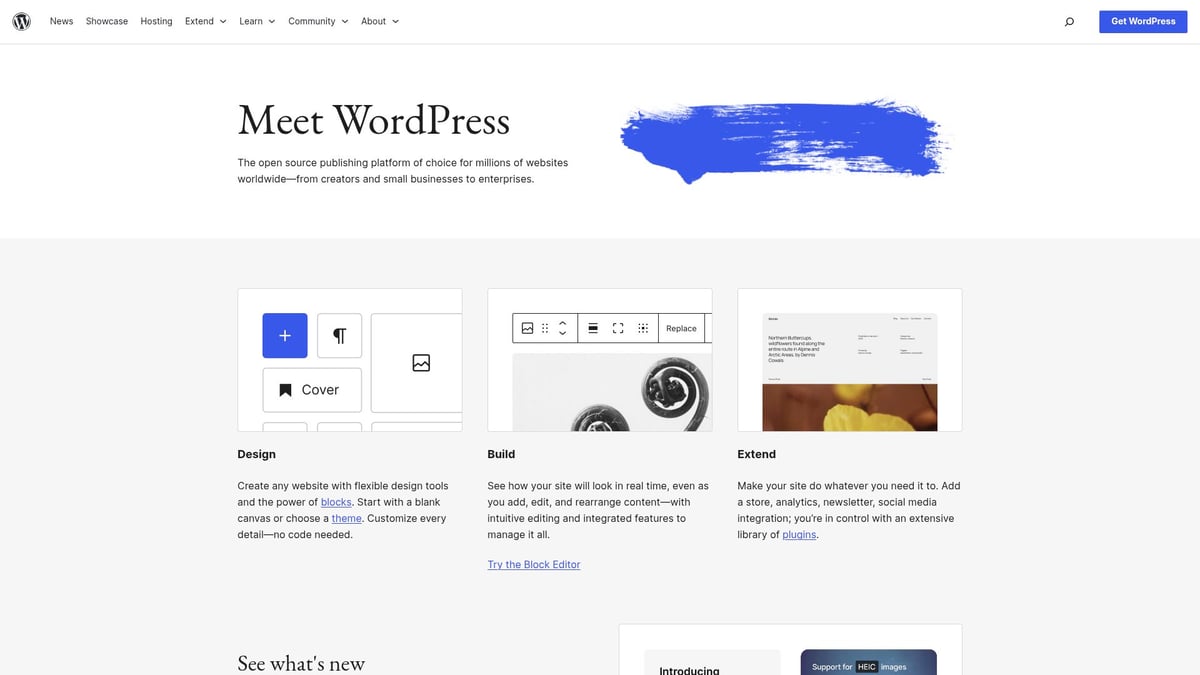
WordPress offers open-source CMS, thousands of themes and plugins, and full eCommerce integration with WooCommerce. It is the backbone for bloggers, SMEs, agencies, and content-rich sites.
Key benefits:
Unmatched flexibility and scalability
Huge ecosystem of plugins and themes
Strong SEO capabilities
Pros:
Highly customisable
Vibrant community support
Suitable for any site size
Cons:
Requires ongoing maintenance
Occasional plugin compatibility issues
For those needing robust content management, WordPress is a top choice among website design applications.
Shopify
Shopify is a powerhouse in website design applications for eCommerce, with plans from £25 per month for Basic, £65 for Shopify, and £344 for Advanced.
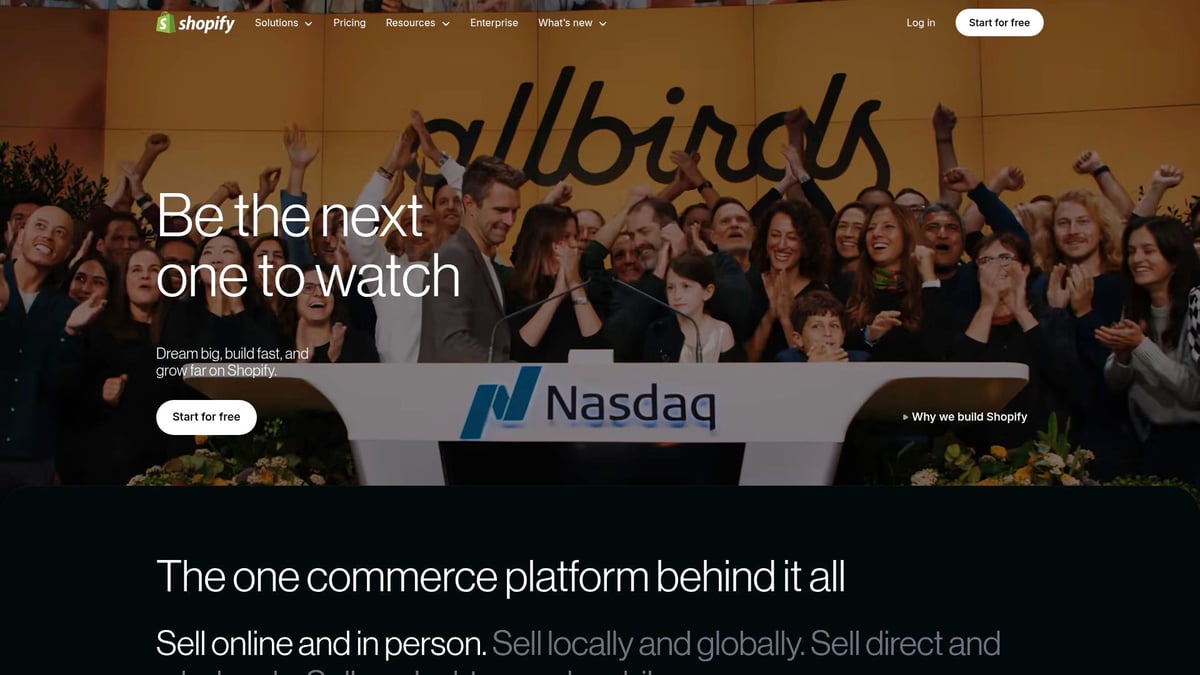
Shopify offers a hosted platform with drag-and-drop building, secure payments, and deep analytics. Brands and entrepreneurs love its fast setup and reliable infrastructure.
Key benefits:
Fast, secure eCommerce launch
Rich app integrations
Scalable for growing brands
Pros:
Reliable hosting and uptime
Extensive app store
Easy-to-use interface
Cons:
Transaction fees apply
Customisation requires coding
If you want to optimise your Shopify store, check out the Best Shopify apps for 2025 for extra tools to supercharge your online shop. Shopify is a must in the world of website design applications for selling online.
Craft CMS
Craft CMS rounds out our list of website design applications for those seeking flexibility and security. Pricing includes Solo (free), Pro at $299 per year, and custom Enterprise options.
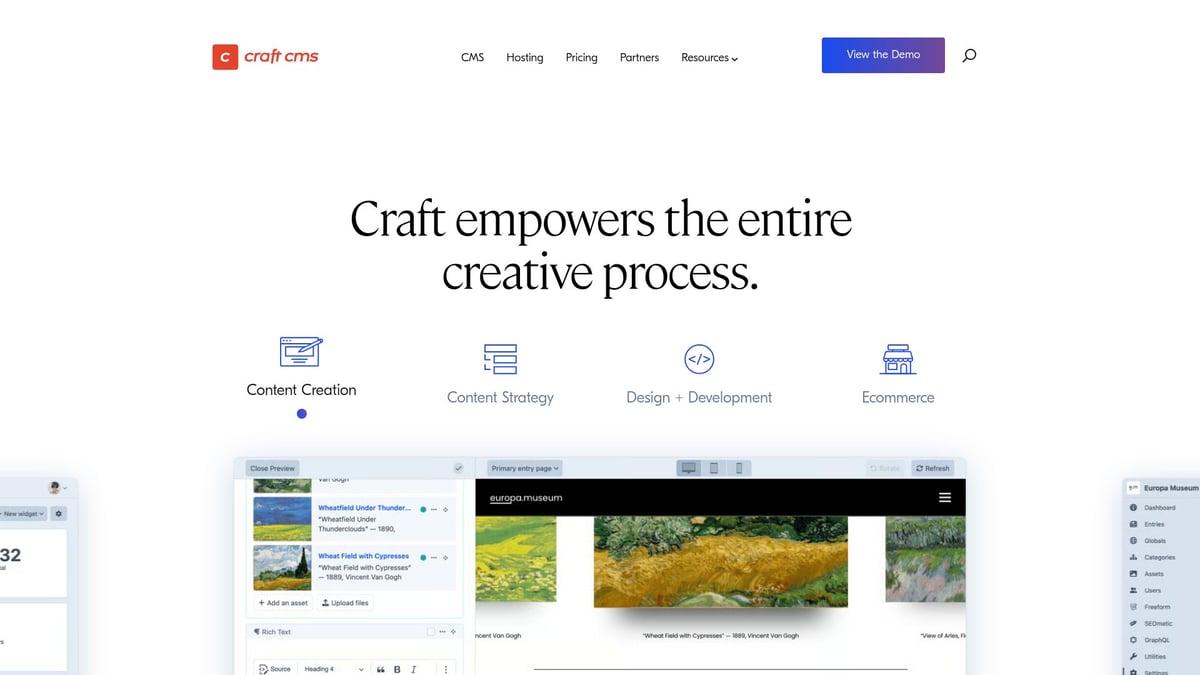
Craft CMS shines with custom content modelling, multi-site support, and a clean admin UI. It is developer-friendly and robust for bespoke, content-rich projects.
Key benefits:
Flexible structure for complex sites
Strong focus on security
Powerful templating language
Pros:
Clean, intuitive admin interface
Excellent for custom projects
High security standards
Cons:
Requires developer expertise
Smaller plugin marketplace
If you need a secure, developer-driven CMS, Craft CMS is a standout among website design applications.
Integrating Design Applications into Your Workflow
Bringing the best website design applications into your workflow can feel like assembling a toolkit for digital success. By aligning your team, process, and tools, you create a smooth path from concept to finished website. Let’s explore how to make these applications work together, ensuring every project benefits from their full potential.
Choosing the Right Stack for Your Team
Selecting the right combination of website design applications starts with understanding your team’s goals and resources. Are you a small agency juggling multiple clients, or a growing business aiming for scalability? For example, pairing Figma for design, Webflow for building, and WordPress for content management can streamline even complex projects.
Teams often benefit from integrating tools with overlapping features, which reduces friction and supports seamless workflows. For more guidance on aligning applications to your business needs, check out this Web design services overview to see how leading agencies structure their toolkits.
Collaboration and Handover Best Practices
Effective collaboration is at the heart of any successful project using website design applications. Real-time feedback, shared design systems, and clear handoff protocols ensure everyone stays on the same page. Tools like Figma and Framer enable designers and developers to iterate together, reducing misunderstandings and revision cycles.
Adopting collaborative platforms can cut project timelines by up to 30 percent, as agencies have discovered. For more on choosing the right applications for your brand, the Importance of brand-led web design highlights how tool selection supports strategic outcomes.
Staying Up to Date with Application Updates
Website design applications evolve rapidly, so staying current is key. Regularly joining webinars, subscribing to design blogs, and engaging in user communities helps your team learn about new features and best practices. Continuous training ensures everyone can make the most of updates, keeping your workflow fresh and efficient.
By making learning part of your process, you’ll always be ready to adapt as new website design applications enter the market and transform the digital landscape.
Trends and Innovations in Website Design Applications for 2025
We are in a golden age of creativity, where website design applications are evolving faster than ever before. The tools we use today are smarter, more connected, and packed with features that foster innovation and collaboration.
AI-powered design assistants are rapidly transforming the way we work. Many platforms now offer intelligent features that automate repetitive tasks, suggest layouts, and even generate creative assets on demand. If you are curious about the most promising advancements, check out this expert guide on AI-Powered Design Tools in 2025 for a deep dive into how artificial intelligence is shaping the future of our industry.
Accessibility and inclusive design are also taking centre stage. New website design applications prioritise tools that help you create experiences everyone can use, regardless of ability or device. Automated accessibility checks, guided design suggestions, and compliance dashboards make it easier to build sites that work for all users.
Integration is another hot topic. Modern website design applications seamlessly connect with marketing, analytics, and eCommerce platforms. This not only streamlines your workflow but also empowers you to create data-driven, conversion-focused websites. For a glimpse of the broader trends influencing these innovations, the Adobe Creative Visual Report 2024 highlights the rise of automation, personalisation, and immersive design.
The growth of low-code and no-code solutions is making rapid prototyping accessible to all. Tools like Figma’s AI plugin rollouts and Shopify’s headless commerce features show how brands can quickly test new ideas and adapt to market shifts.
Looking ahead, we can expect website design applications to become even more adaptive and intelligent. From real-time collaboration to predictive design suggestions, the next wave of tools will help us stay ahead of the curve. Embracing these trends ensures we are ready for whatever the future brings.
Now that you’ve seen how the right website design applications can shape your digital success in 2025, imagine the possibilities for your own business. Whether you’re looking to elevate your brand, streamline your workflow, or create memorable online experiences, we’re here to help you put these powerful tools into action. At Futur Media, we love turning fresh ideas into real results—together, we can build something extraordinary. If you’re ready to take the next step and bring your vision to life, let’s chat about your goals and get started on your journey.
Start Project

